In this post, you will learn what are the different types of transmission line structures, Lattice Steel Towers (LST) , Tubular Steel Poles (TSP).
Transmission structures
Transmission structures support the conductors used to transport electric power from generation sources to customer load.
Transmission lines carry electricity over long distances at high voltages, typically between 115 kV and 765 kV (115,000 volts and 765,000 volts).
Download & Install EEE Made Easy App
Read Also : Parts of a Power transmission line and Transmission tower|Transmission tower parts
.Types of Transmission Towers|Electrical Tower Types
Types of transmission structures
There are many different designs for transmission structures. Two common types are:
- Lattice Steel Towers (LST)
- Tubular Steel Poles (TSP)
Lattice Steel Towers (LST)
Lattice Steel Towers consist of a steel framework of individual structural components that are bolted or welded together.
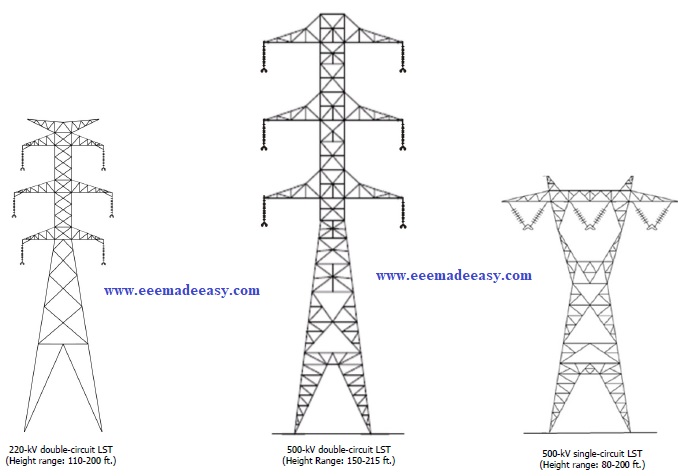
Tubular Steel Poles (TSP)
Tubular Steel Poles are hollow steel poles fabricated either as one piece or as several pieces fitted together.

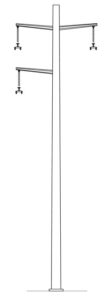
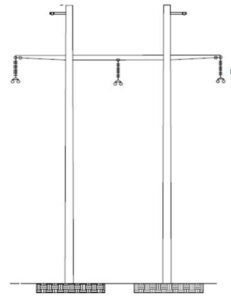
Both LSTs and TSPs can be designed to carry either one or two electrical circuits, referred to as single-circuit and double-circuit structures.
Best Book for RRB JE Electrical –RRB 2022-23 – Junior Engineer CBT -I & II
Parts of a Power transmission line and Transmission tower|Transmission tower parts
Double-circuit structures & single-circuit structures
Double-circuit structures typically hold the conductors in a vertical or stacked configuration, whereas single-circuit structures typically hold the conductors horizontally.
Due to the vertical configuration of the conductors, double-circuit structures are taller than single-circuit structures.
On lower voltage lines, structures sometimes carry more than two circuits.
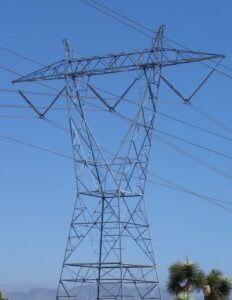
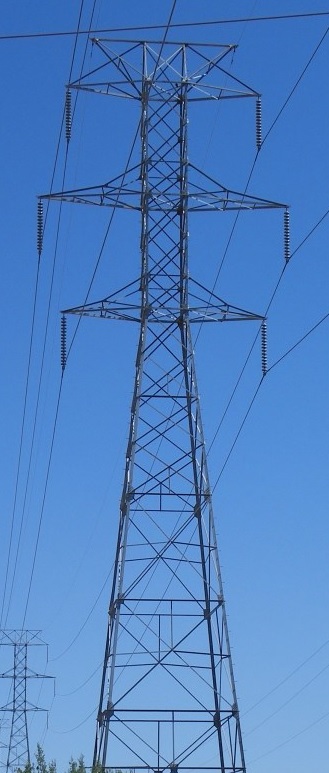
A single-circuit alternating current (AC) transmission line has three phases. At low voltages, a phase usually consists of one conductor.
At high voltages (over 200 kV), a phase can consist of multiple conductors (bundled) separated by short spacers.
A double-circuit AC transmission line has two sets of three phases.
Dead-end towers
Dead-end towers are used where a transmission line ends; where the transmission line turns at a large angle; on each side of a major crossing such as a large river, highway, or large valley; or at intervals along straight segments to provide additional support.
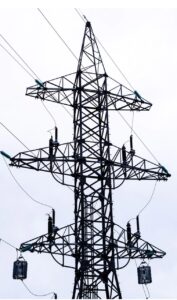
A dead-end tower differs from a suspension tower in that it is built to be stronger, often has a wider base, and has stronger insulator strings.
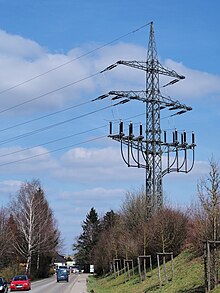
Transmission structure size
Structure sizes vary depending on voltage, topography, span length, and tower type.
For example, double-circuit 500-kV LSTs generally range from 150 to over 200 feet tall, and single-circuit 500-kV towers generally range from 80 to 200 feet tall.
Why Double-circuit structures are taller than single-circuit structures?
Double-circuit structures are taller than single-circuit structures because the phases are arranged vertically and the lowest phase must maintain a minimum ground clearance, while the phases are arranged horizontally on single-circuit structures.
As voltage increases, the phases must be separated by more distance to prevent any chance of interference or arcing.
Thus, higher voltage towers and poles are taller and have wider horizontal cross-arms than lower voltage structures.
Read Also
Pole and Tower Lines for Electric Power Transmission
Parts of a Power transmission line and Transmission tower|Transmission tower parts
- [MCQ Set 1]Electrical Power Generation, Transmission and Distribution MCQ Questions|EEE Made Easy
- [MCQ Set 2]Electrical Power Generation, Transmission and Distribution MCQ Questions|EEE Made Easy
Latest Posts
Latest Posts in EEE Made Easy
- Environment MCQ for RRB JE CBT 2|Objective Questions Environment for Competitive Exams
- RRB JE CBT 2 Computer Awareness Book Arihant|Objective Computer Awareness Book 2025
- RRB JE CBT 2 Exam Date 2025 Postponed|RRB JE CBT 2 Exam Date
- [PDF]RRB JE Result 03/2024 Cut off, Selected no of candidates for all regions
- [PDF]Final Answer Key Junior Instructor Mechanic Agricultural Machinery|643/2023 Solved Question paper
- Acoustics MCQs|Industries Extension officer|IEO 2025
- LASER MCQs| Industries Extension officer|IEO 2025
Latest Posts in EEE Made Easy
- Environment MCQ for RRB JE CBT 2|Objective Questions Environment for Competitive Exams
- RRB JE CBT 2 Computer Awareness Book Arihant|Objective Computer Awareness Book 2025
- RRB JE CBT 2 Exam Date 2025 Postponed|RRB JE CBT 2 Exam Date
- [PDF]RRB JE Result 03/2024 Cut off, Selected no of candidates for all regions
- [PDF]Final Answer Key Junior Instructor Mechanic Agricultural Machinery|643/2023 Solved Question paper
- Acoustics MCQs|Industries Extension officer|IEO 2025
- LASER MCQs| Industries Extension officer|IEO 2025



